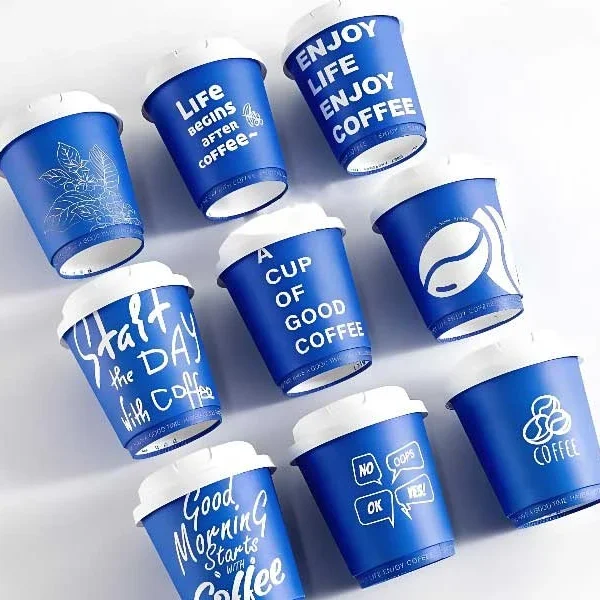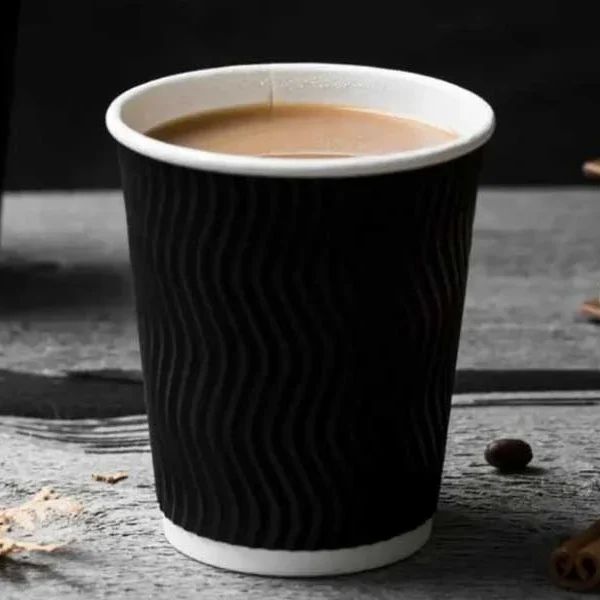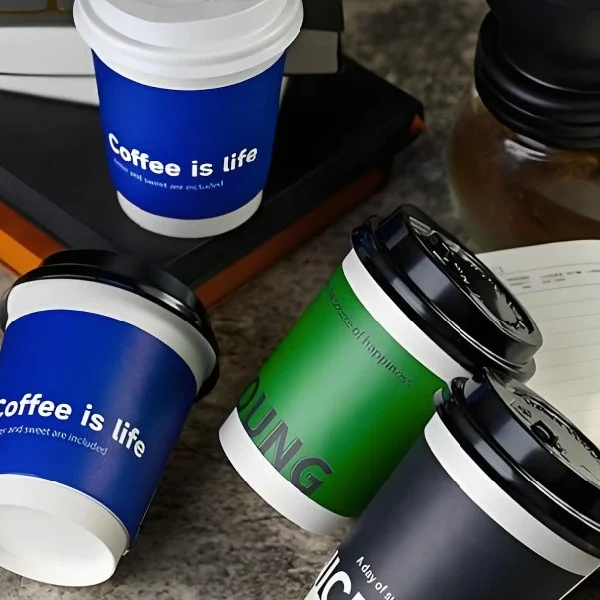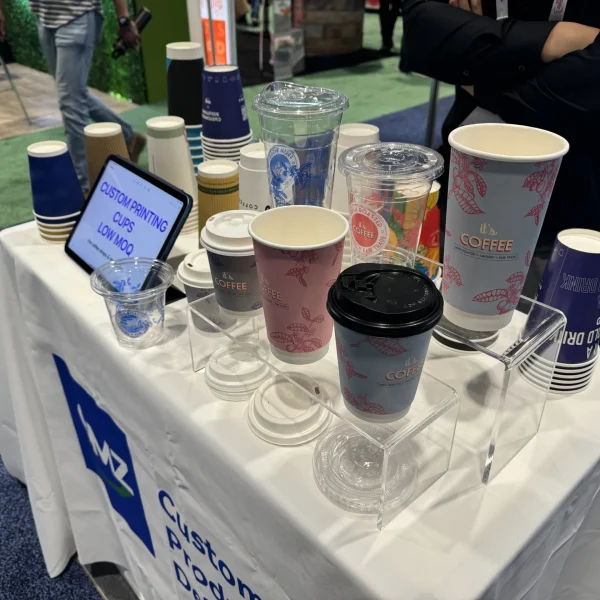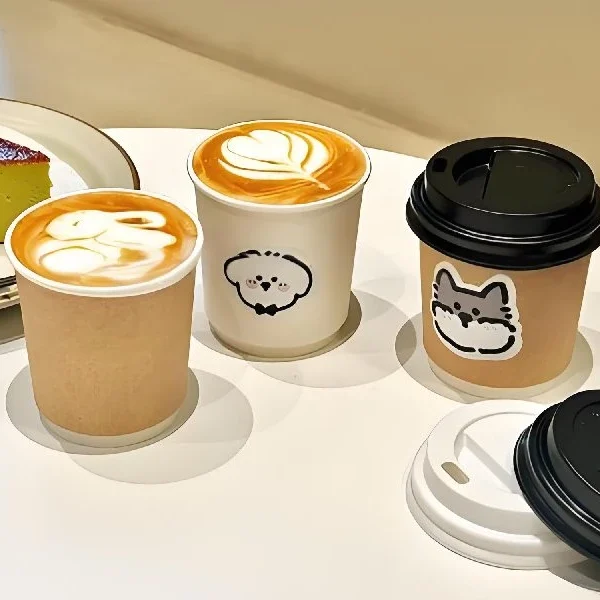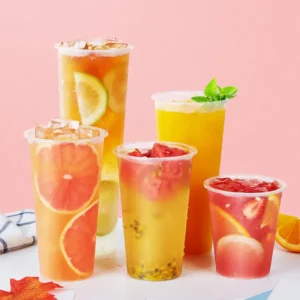Trying to make more sustainable choices when it comes to packaging? You’re not alone! With so many labels, symbols, and claims out there, knowing what’s truly eco-friendly can feel overwhelming. But don’t worry – this guide is here to simplify things. We’ll walk you through the most common sustainability symbols and labels, so you can quickly spot packaging that’s genuinely better for the planet. By the end, you’ll feel confident identifying which options are green, without needing to be an expert. Let’s dive in and make sustainable choices a little easier!
Recycling Symbol (Mobius Loop)

The Recycling Symbol, often called the Mobius Loop, is a familiar sight on many products. This symbol, which features three arrows chasing each other, indicates that a material can be recycled, but it’s important to remember that this doesn’t guarantee it will be accepted by your local recycling program. The symbol was created in the early 1970s by Gary Anderson, who was just 23 years old at the time. It has since become a universal icon, even appearing as an emoji!
However, not all items with this symbol are truly recyclable. Some companies use it without ensuring that their products meet local recycling standards. For example, while the symbol suggests that a product can be recycled, it’s crucial to check the number inside the loop, which indicates the type of plastic. Only certain types, specifically those labeled with a 1 or 2, are commonly accepted in recycling programs.
Green Dot

If you’ve ever shopped in a European supermarket, you might have noticed the Green Dot symbol on various packages. This symbol, which can appear in different colors, signifies that the manufacturer has made a financial contribution to help with the recovery and recycling of packaging materials. It’s important to understand that while the Green Dot looks like it promotes recycling, it doesn’t guarantee that the packaging itself is recyclable.
The Green Dot is managed by the PRO Europe organization, which sets strict guidelines for its use. This means that any company can display the symbol, regardless of whether their packaging is recyclable or not. The main goal of this symbol is to encourage manufacturers to minimize their packaging waste, which can lead to lower fees for them and a healthier environment for all.
FSC Logo

The FSC Logo stands for the Forest Stewardship Council, a non-profit organization dedicated to promoting responsible forest management. When you see this logo on a product, it means that the materials used come from forests that are managed in a way that is environmentally friendly and socially beneficial. This certification helps ensure that the forests are not only preserved but also that the rights of local communities are respected.
Products with the FSC label can be categorized into three types: FSC 100%, FSC Mix, and FSC Recycled. Each category indicates the source of the materials used, with the FSC Recycled label specifically showing that the product is made from 100% recycled content. By choosing products with the FSC logo, you are supporting sustainable forestry practices and helping to protect our planet’s forests. This is especially important as we face challenges like deforestation and climate change.
In a world where packaging often contributes to waste, the FSC logo serves as a beacon of hope for more responsible choices in our daily lives.
| FSC Label Type | Description |
|---|---|
| FSC 100% | Made from 100% materials sourced from FSC-certified forests. |
| FSC Mix | Contains a mix of FSC-certified materials and recycled content. |
| FSC Recycled | Made entirely from recycled materials. |
Compostable Logo

The Compostable Logo is a key indicator that a product can break down in a composting environment. This logo, often seen on items like bioplastic forks and cups, signifies that the product has been tested and certified by organizations like the Biodegradable Products Institute (BPI).
However, it’s important to note that just because a product is labeled as compostable, it doesn’t mean you can toss it in your home compost bin. Most of these items require a commercial composting facility to decompose properly. These facilities create the right conditions, such as high temperatures, to ensure effective breakdown. If you see the BPI Compostable logo, it usually comes with a disclaimer stating, “COMMERCIALLY COMPOSTABLE ONLY / FACILITIES MAY NOT EXIST IN YOUR AREA.” This means that if your local area doesn’t have a facility, you should avoid recycling these items as they can disrupt standard recycling processes. Instead, they should be disposed of in regular trash, where they will take years to decompose.
| Logo Type | Certification Body | Composting Type |
|---|---|---|
| BPI Compostable | Biodegradable Products Institute | Commercial only |
| OK Compost | Vincotte | Industrial facility |
| Seedling Logo | Australian Bioplastics Association | Commercial & Home |
BPI Certified

The BPI Certification Mark is a sign that a product or packaging is compostable. This mark shows that the item has been tested and meets the standards set by ASTM D6400 or D6868. These standards check how well a product breaks down in a composting environment. If you see this mark, it means the product is designed to break down in a commercial composting facility, not in your backyard compost.
It’s important to note that many people might not have access to these facilities, so always check with your local waste management. The BPI certification is not mandatory, but it helps companies show their commitment to using biodegradable materials. This can attract customers who care about the environment. The BPI mark can be found on various items, including cups and bags, making it easier for consumers to choose sustainable options. If you’re looking for eco-friendly products, keep an eye out for the BPI Certification Mark!
Resin Identification (Plastic Codes 1-7)
The Resin Identification Code (RIC) is a system that helps us understand what type of plastic is used in products. This code is important for recycling! It consists of a triangle made of arrows with a number inside, ranging from 1 to 7. Each number represents a different type of plastic resin.
Here’s a quick look at what each code means:
| Code | Plastic Type | Common Uses |
|---|---|---|
| 1 | Polyethylene Terephthalate (PET) | Water bottles, soft drink bottles |
| 2 | High-Density Polyethylene (HDPE) | Milk jugs, detergent bottles |
| 3 | Polyvinyl Chloride (PVC) | Pipes, clear food packaging |
| 4 | Low-Density Polyethylene (LDPE) | Grocery bags, bread bags |
| 5 | Polypropylene (PP) | Yogurt containers, straws |
| 6 | Polystyrene (PS) | Disposable coffee cups, plastic food boxes |
| 7 | Other (various plastics) | Multi-layer packaging, some types of nylon |
While the RIC helps in identifying the materials, it does not guarantee that the product is recyclable. For example, many people think that if a product has a recycling symbol, it can be recycled. However, this is not always true. The actual recycling rules can vary by location, and not all plastics are accepted in every recycling program.
Plastic-Free Certification

When browsing for eco-friendly options, you may come across the Plastic-Free Certification on certain products. This certification, often displayed as a clear badge or label, ensures that the packaging contain absolutely no plastic materials. Managed by organizations like Plastic Free Trust, this certification aims to promote alternatives to single-use plastics, a key contributor to environmental pollution.
Unlike some eco-labels, the Plastic-Free Certification is straightforward—if it’s there, it means the product is entirely plastic-free. It covers everything from the packaging down to the smallest components, ensuring a fully sustainable choice for consumers who want to avoid plastic altogether.
The Plastic-Free Certification is a powerful tool for shoppers aiming to reduce plastic consumption, but for a complete picture of sustainability, it’s still wise to check for other eco-friendly labels alongside it.
Wrapping It Up
And there you have it – a quick guide to recognizing sustainable packaging labels and symbols! With these tips, you’ll be able to make eco-friendly choices with confidence, supporting packaging that’s better for the planet. We hope this guide has taken the guesswork out of your search and given you the tools to spot genuine sustainability. Now, the next time you’re shopping, you’ll know exactly what to look for. Here’s to making greener choices, one package at a time!

